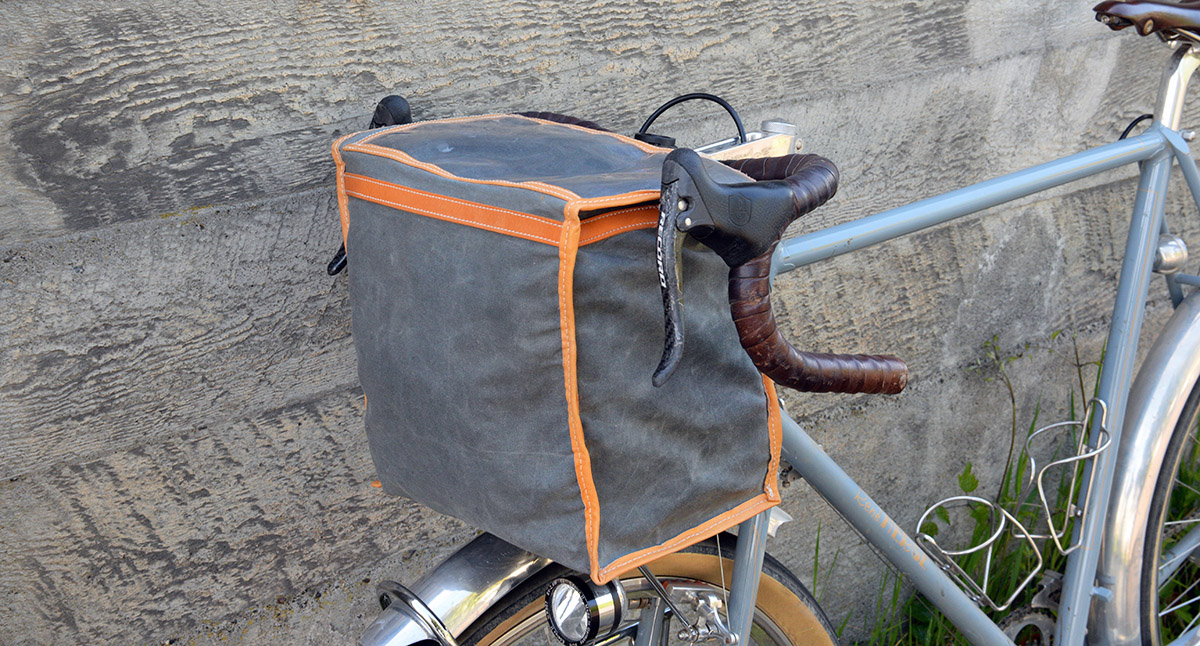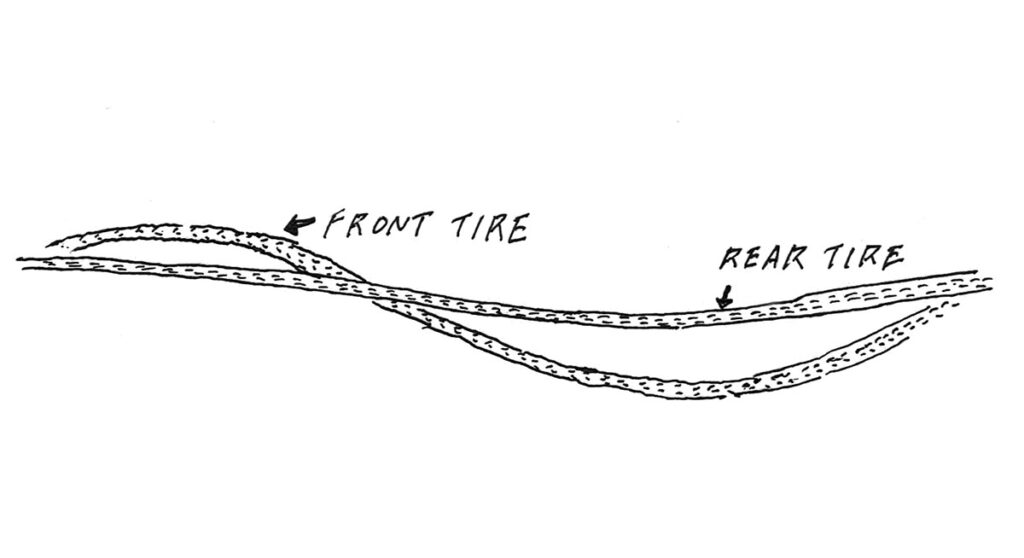Introducing the Ultralight Handlebar Bag
To celebrate 85 years of Rene Herse Cycles, we’re introducing a new line of Rene Herse bags. The first model is the Ultralight Handlebar Bag, a minimalist bag that’s designed for long and challenging adventures. In recent months, eagle-eyed readers have spotted a new bag on my bikes—those were actually multiple iterations of prototypes for our new Ultralight bag.
When designing my bikes for bikepacking races and adventures, I chose a French-style handlebar bag as a convenient spot to carry food, extra clothes, spare tubes and (sometimes) a camera. Superlight for its volume and remarkably aerodynamic, the front bag also makes my things easily accessible while riding. Putting the weight at the front means it doesn’t impact the bike’s handling, so I don’t get the tail-wagging-the-dog feel that comes with voluminous rear bags. That these bags last (almost) forever and use (almost) no plastic is an added benefit.
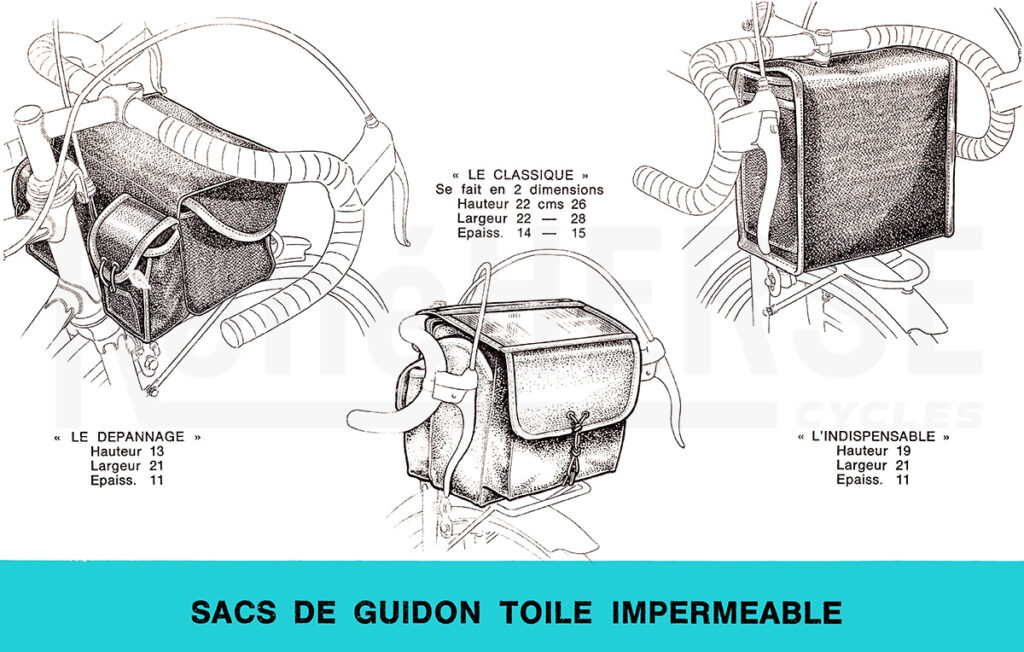
Rene Herse Cycles has a long tradition of making bags. The earliest catalogs in the 1940s already featured a complete line of bags. In later years, other companies started making bags that were similar, and Herse focused on making his iconic bikes. We’ve now decided to make our own bags again, with a number of improvements over existing designs that are the result of decades of experience.
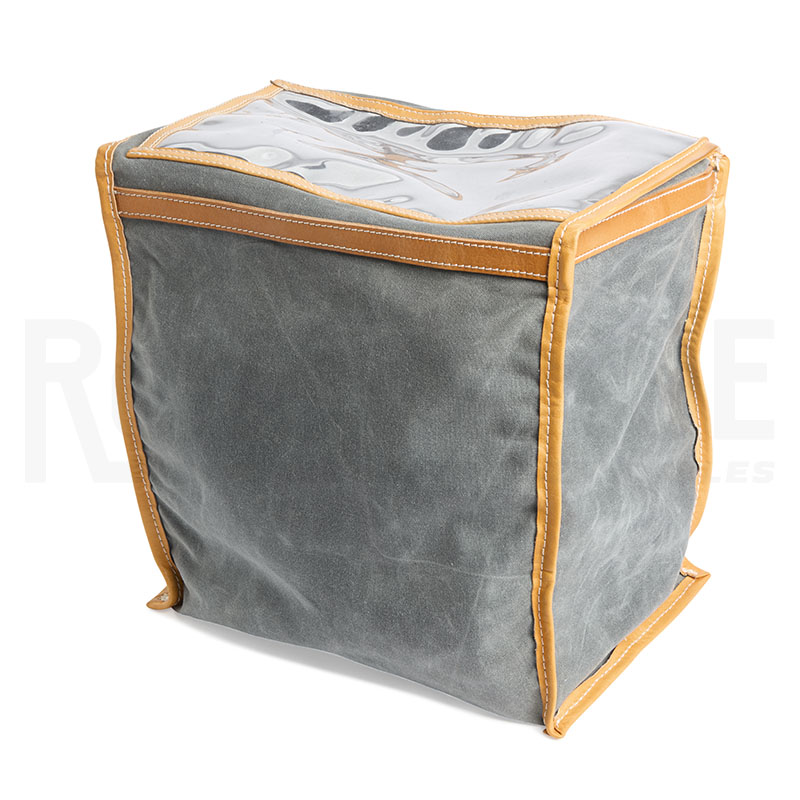
The new Ultralight Handlebar Bags are made from a waxed cotton fabric. Not only is this completely waterproof, but it also becomes more beautiful with use. (The wax can be reapplied if that becomes necessary after many years of hard use.) We’ve reduced the leather trim to a minimum, to save weight and give the bag a modern appearance. The weight savings are significant: The Large size that I use on my bikes weighs just 383 g, or 25% less than the Berthoud bags I used before. To arrive at this light weight, we’ve also eliminated the outside pockets, which add much weight and only little volume. We did keep the map pocket on the top flap, which is now accessed from the side and closed with Velcro. This provides a convenient place to carry a map or cue sheet (obviously), but also a GPS tracker, wallet and similar things you want to access quickly.
Like all French-style bags, ours needs a rack to support it from below. Even factoring in the weight of a Rene Herse CP-1 rack—also superlight at 168 g—I get a system that weighs just 551 g and has a capacity of a little over 15 liters. (The rack also incorporates a light mount, which otherwise adds another 35 grams or so.) The boxy shape and large top flap ensure that the entire volume is useable and easy to access. The waxed cotton fabric and leather trim are key to the light weight: They are stiffer than synthetic fabrics, so they don’t require additional stiffeners. (Comparable ultralight bags from synthetic fabrics weigh 500 grams or more for the bag alone.)
The Rene Herse bags incorporate a leather sleeve at the bottom that can be used for a strap to attach the bag securely on the rack. This is useful when riding on rough terrain, where the bag otherwise bounces up and down. It’s a feature I’ve used last year during the Dark Divide 300 and the Arkansas High Country Race, and I now consider it essential when riding on rough terrain.
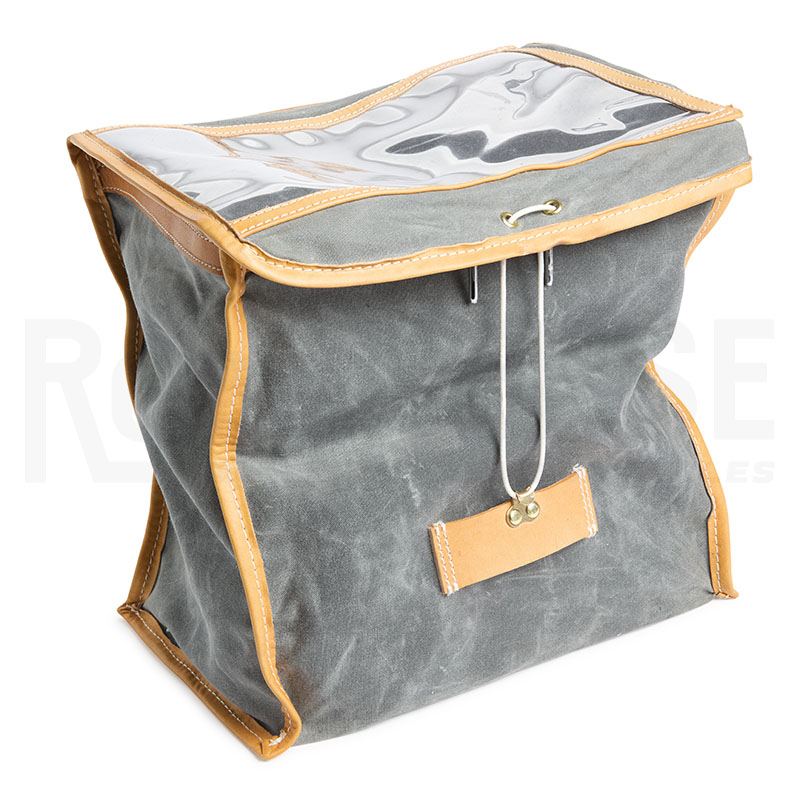
Easy access is another major plus. The bag is designed so the flap opens to the rear. The wind pushes the flap down. Unless the road is really bumpy, there’s no need to latch the elastic over its hook. It’s easy to grab things from the bag with one hand while riding. On bumpy roads, I latch the elastic cord onto the stem or the hook provided on the bag. That hook also is improved, with a wider shape that doesn’t catch on gloves when it’s cold, and two rivets, so it never turns (which can be super-frustrating when you try to close the bag with cold fingers.)
On the rear is a sleeve that slides over the rack’s backstop. It works for ‘tombstones’ up to 60 mm wide. The leather sleeve holds the bag securely, and it doesn’t rattle like straps with buckles. It’s lighter, too.
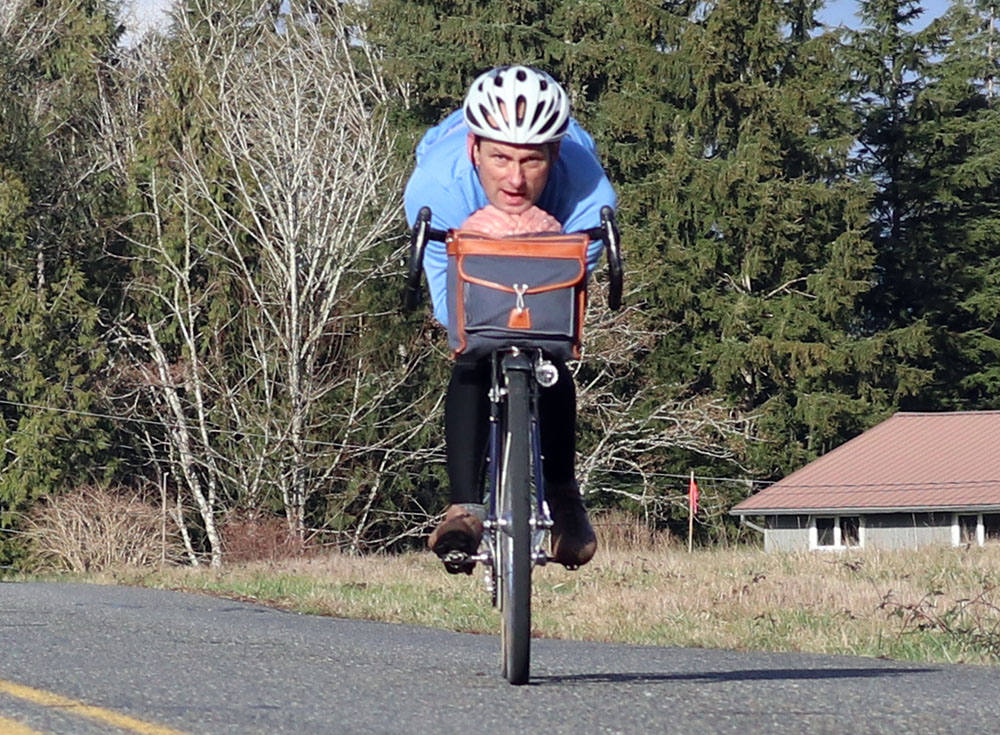
Surprisingly, the boxy shape is key to the superior aerodynamics—especially in the aero tuck (shown here with a different bag). We tested this in the wind tunnel, and found that more rounded shapes were far less aero. I suspect this is because the bag closes the space between the arms of the rider—the one place where truly large aero gains are possible on a bike. (That’s also why aero bars are so effective.) Real-road experience confirms the wind tunnel data: Whenever I ride road and gravel bikes without handlebar bags, my friends comment how much slower I coast down hills than I do on my bag-equipped bikes.
Compared to large saddle bags, a front bag does not impact the bike’s steering—especially if the front-end geometry is designed to factor in the effect of the load. Why can’t rear loads be made to handle well? A bike is balanced by steering the front wheel. The rear wheel follows with a lag and reduced amplitude. (You can see that when you look at your tire tracks after riding through a puddle.) This means balancing a front load—by getting the wheel back under the center of gravity—requires much smaller inputs and is more precise. To balance a rear load, you steer the front wheel, and then wait until the rear wheel follows suit.
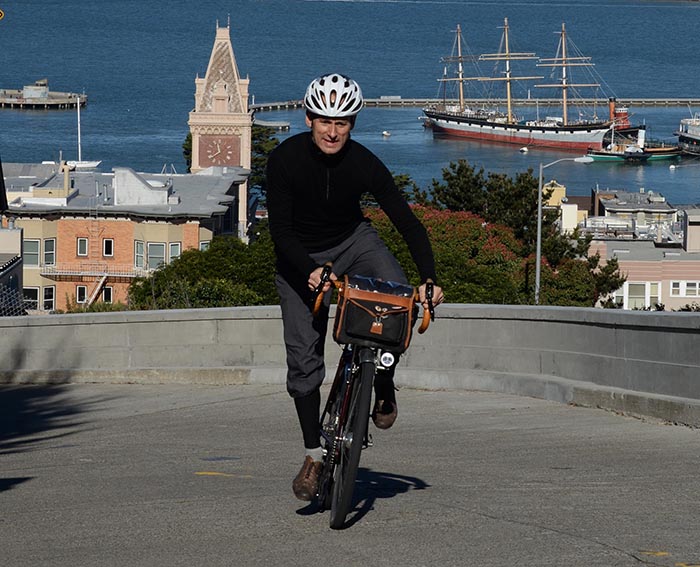
And when you ride out of the saddle and rock the bike, your hands are on the bars, but your saddle and the rear of the bike aren’t supported. A front load remains stable, but a rear load has that tail-wagging-the-dog tendency. What happens when you ride no-hands, and you no longer support the handlebars? Riding no-hands, your steering inputs are relatively small, and a front load works fine—especially if the bike doesn’t have a lot of wheel flop. All this is simple physics, and it really works that way in the real world, too.
The one drawback of these bags is that they need a rack to support them from below. That creates a stable platform and is the reason why they work so well and can be so light. There are many ways to carry bikepacking loads on a bike, and most work fine. This post explains why we like the classic Rene Herse-style front bag.
Rene Herse Ultralight handlebar bags are made in the U.S. in a small, one-person shop. All sizes are in stock now. We are also working on a cyclotouring bag with front and rear pockets and a few other features that we’ve found useful when touring.
In related news, our UD racks are also on the way and should be in stock in May.
More information:
- Bags in the Rene Herse program
- Racks in the Rene Herse program
- The All-Road Bike Revolution is our book that explains how bikes balance, how geometries can be adjusted for carrying loads, and much more.


